White Stork Ciconia ciconia
Very scarce migrant. Status complicated by re-introduction schemes in Britain and Europe.
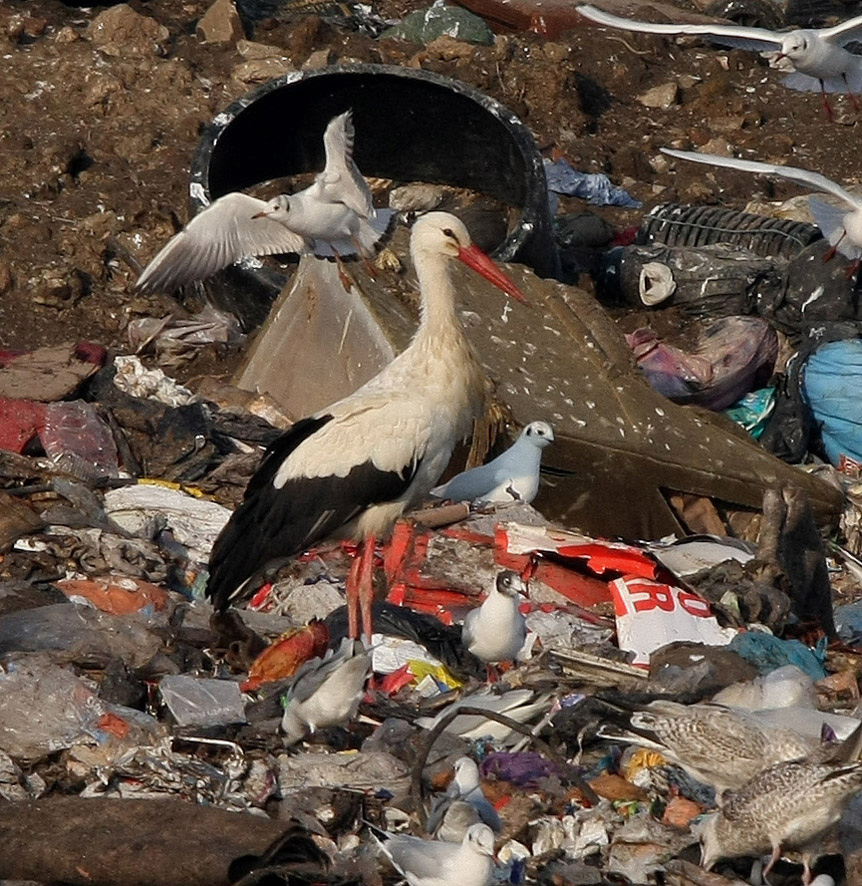
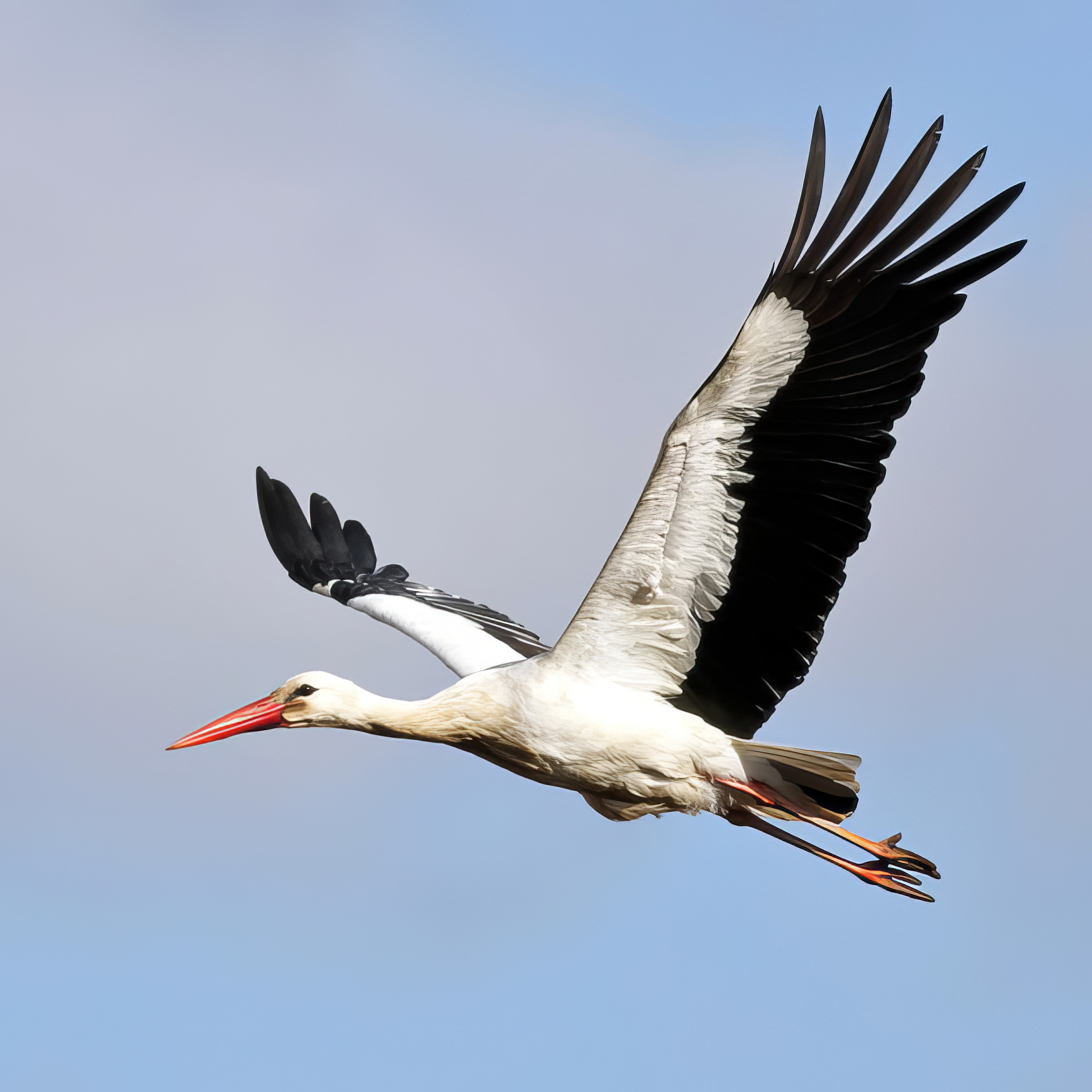
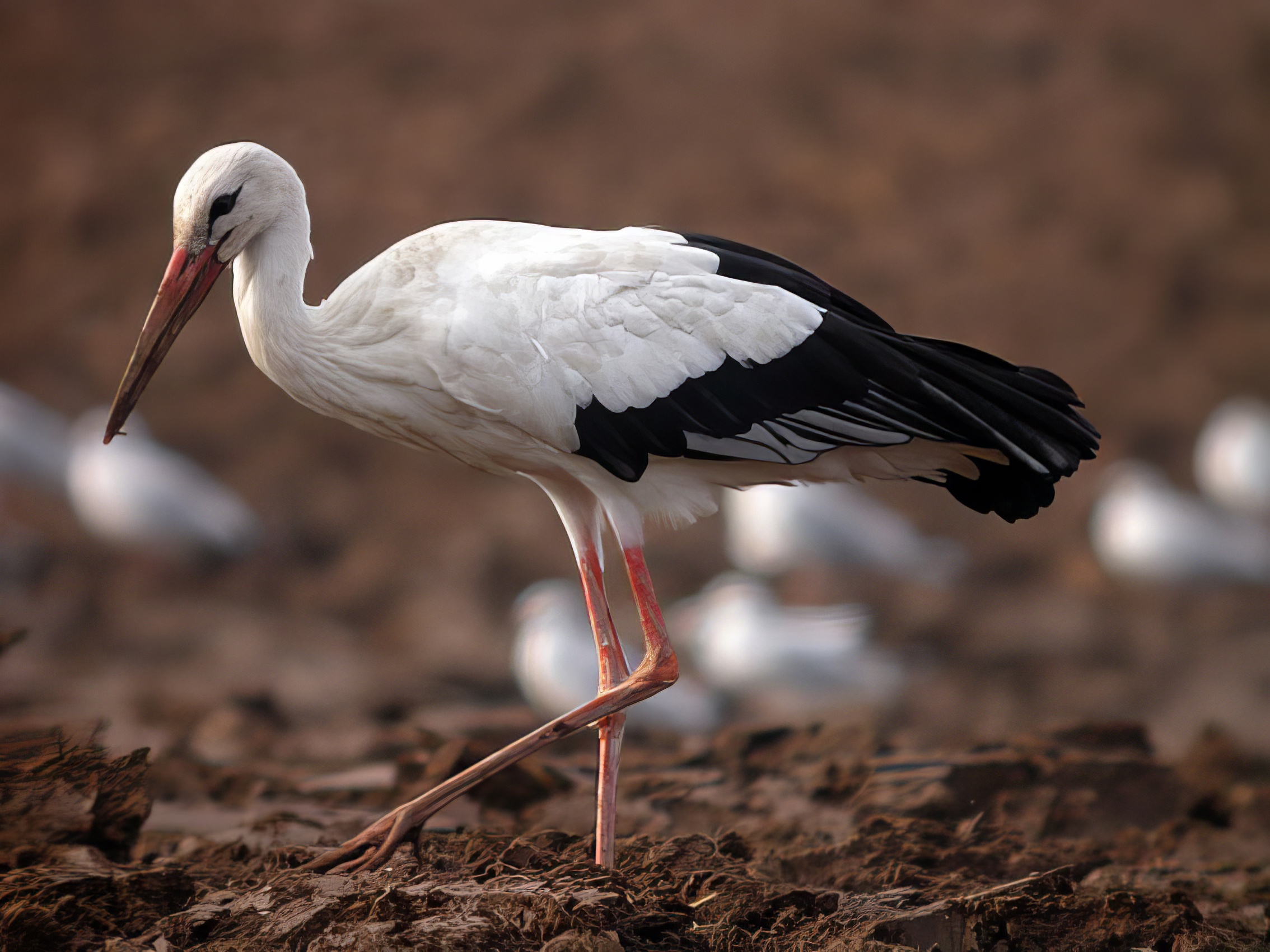
White Storks: left and centre, Kirkby on Bain landfill site February 10th 2012; this bird had also visited Conisholme and Scrivelsby before turning up at Kirkby (Russell Hayes).
Right, Sutterton October 11th 2005 (Dean Eades).
One was shot at Marshchapel in June 1832 since when subsequent records have been more fortunate. An influx to the UK in 1967 involving about 11 birds was described in the rarities report for that year as “perhaps the most striking influx ever recorded” and resulted in the first modern record with three seen at Marshchapel on May 21st that year. This was a BBRC species until 1983 and there were another three records in 1968, 1971 and 1976 before the species was devolved to county record committees. There are records from seven months of the year with the earliest January 29th, 2012; this bird frequented Kirkby landfill site on and off to March 3rd 2012. Another long-stayer was in the Stickney area April-June 1971. Most records were in April -June (21) with singles in August, October and November. Taking into account multiple records of wandering birds and excluding probable escapes and birds from reintroduction schemes, there may have been as few as 29 individuals involved. One or two have been tracked as they shifted location but the majority of Lincolnshire birds have been seen only on single dates or a handful of days. The longest stay by far of a wild bird was 45 days by one in 1971, but two escaped birds have remained for 19 and 33 days.
Understanding of the status of White Stork records is now complicated by the existence of reintroduction schemes in the UK and on the near-continent. Some of these birds winter in The Netherlands rather than migrating to Africa as local populations did traditionally. The charts below include four individuals that are assumed to have escaped from captivity, in various circumstances. It is likely that the records in 2016 related to birds flying free from a rehabilitation scheme in Norfolk of birds injured in Poland. The re-introduction scheme at the Knepp Estate in Sussex is the major source of naturalised birds - another 37 were released in August 2022, all of them BTO-ringed and with a blue darvic ring on the othe leg; eight also carry GPS satellite tages. The Knepp population probably numbers more than 50 birds in total. These birds will in the future not be added to the county archive.
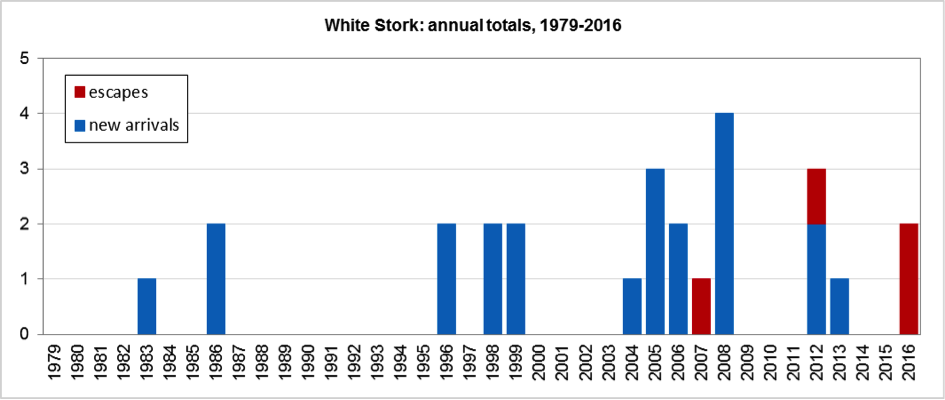
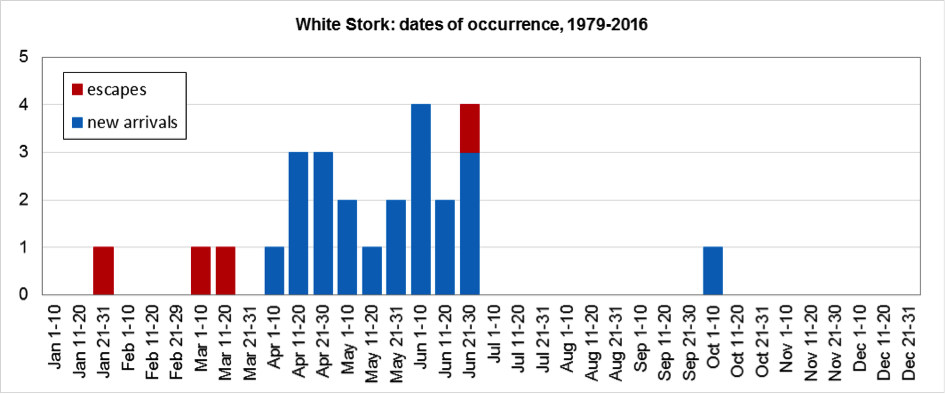
Finder’s report: White Stork at Bennington, November 25th, 1968: an early county record.
by J. S. Rivers and M. E. Raven
Note: this account is based on the original BBRC submission. The RC report for 1967 commented on the unprecedented influx of White Storks in 1967, and that it was difficult to be certain of the total number, but it appears there were three in Kent and Sussex in mid-April followed by a widespread arrival of at least ten (including a party of four) in the last ten days of that month, mainly in East Anglia and the south-east, but west to Wiltshire. Onward movement of some of these may well have been responsible for the more northerly records in May and June, while the three July ones suggested withdrawal rather than a fresh influx. The long stay (April 23rd to December 27th) of the two at Halvergate, Norfolk, was particularly noteworthy and display between them was frequently recorded. Sadly, one of these two birds was killed through collision with an overhead cable.
A.D. Townsend in correspondence with F. R. Smith, RC secretary, thought it likely that this bird was the one which wintered in Norfolk, 1967/68 and that it ‘certainly had no pink on the bill to suggest an escape’. Equally it may have been one of the three birds which turned up at Marshchapel during the 1967 influx. This record was the fourth winter record since 1958.
Circumstances
First observed on November 27th, 1968, when it was seen about a 100 yd. away in a fallow field, but when I returned it moved close to the lane and I was able to see I t down to 20 yd. before it took fright and walked smartly away across the field.
Description
A large bird, bigger than a Heron, all white except for the bright crimson red, straight bill and legs, and black wing feathers folded on lower back. I was told by Bernard Woodward (BW) of Scrane End, Freiston (who thought it was some kind of Pelican) that the bird had been seen there for the previous two days, and one evening had been seen roosting in a nearby tree. It was not seen by me driving past on the next three days (28th-30th) but BW told me that it had stayed till the end of the week on the fields nearer the sea. Today I hear that yesterday and the day before (December 3rd and 4th) the stork may have been seen at Frampton.
It stayed almost three weeks and was seen by quite a number of people including Mr. Giddings, the naturalist of Holbeach who said that it was a wild, migratory bird. Apparently photographed by a Mr. Wolff and reproduced in the Boston Standard in early December.
References
Smith, F. R., and the Rarities Committee (1968). Report on rare birds in Great Britain in 1967 (with 1963, 1964, 1965 and 1966 additions). British Birds 61(8): 329-365.
(Account prepared November 2017; includes records to 2016)

